THE POTENTIAL OF ARTIFICIAL INTELLIGENCE TO TRANSFORM FUTURE-POLICING

Artificial intelligence is progressing rapidly. It has the potential to improve almost every facet of our lives, and the world of law enforcement is no exception. Because of its potential to provide tremendous value to law enforcement, Artificial intelligence will play an increasingly important role in law enforcement over the next decade. As AI advances, it will help law enforcement agencies address crimes faster and more effectively. In the future, law enforcement will continue to focus on solving crimes and fighting crime. However, law enforcement will also pivot towards preventing crime, catching criminals before they can act, and reducing harm before it happens. Hence, the future holds much potential for artificial intelligence and law enforcement.
 Because of its capabilities, artificial intelligence could drive positive change in the law enforcement sector. Police organisations using AI will reduce costs and improve services in the future. AI will also give law enforcement agencies new ways to solve problems. For example, AI could help agencies identify and track suspicious individuals. Artificial intelligence could also enhance trust between police and the communities they serve. Law enforcement agencies will increasingly use artificial intelligence to monitor and analyse citizens. However, the technology is still in its infancy; there are several challenges that law enforcement needs to overcome.
Because of its capabilities, artificial intelligence could drive positive change in the law enforcement sector. Police organisations using AI will reduce costs and improve services in the future. AI will also give law enforcement agencies new ways to solve problems. For example, AI could help agencies identify and track suspicious individuals. Artificial intelligence could also enhance trust between police and the communities they serve. Law enforcement agencies will increasingly use artificial intelligence to monitor and analyse citizens. However, the technology is still in its infancy; there are several challenges that law enforcement needs to overcome.
Police departments in several countries today use AI to analyse vast amounts of criminal data and make sense of it. Police are also deploying AI to automate specific tasks and free-up officers to do other, more important, things. AI can help law enforcement agencies work smarter and more efficiently. Here are several ways in which artificial intelligence can help law enforcement agencies in the future.
AI CAN HELP POLICE IDENTIFY SUSPECTS.
One of the most promising artificial intelligence applications in law enforcement in identifying suspects. Several police departments still adopt manual processes because of inadequate resources and tools to search against their databases of known accused and previously arrested or booked individuals. Such manual processes require significant time and resources. As a result, they follow the procedure only in some severe or high-profile cases and leave cases of lesser importance unsolved. Despite public perception, even when criminals get caught on camera, police still have to identify the suspect and connect him to the crime. Most agencies still manually sift through mass arrest records, turning to colleagues for intel and even publicly promoting the case to identify their person of interest.
It would be easier for police to identify suspected criminals if they could use an AI system that scans databases, internet records, social media, and other sources of information about the criminal in question. AI offers a solution tailored for law enforcement agencies by helping police expeditiously link known offenders to criminal activity, which it accomplishes through innovative facial recognition technology (FRT) supported by a solid digital evidence toolkit.
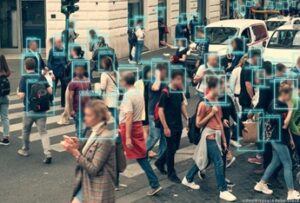 By scanning the video footage, AI can help police identify a suspect caught on camera at a robbery scene or identify a suspect who has a warrant out for his arrest. Many Law Enforcement Agencies use AI facial recognition technology(FRT) to identify suspects from CCTV/video feeds or other records. FRT allows police to quickly compare their known offenders against crime scene footage, saving valuable time and resources.
By scanning the video footage, AI can help police identify a suspect caught on camera at a robbery scene or identify a suspect who has a warrant out for his arrest. Many Law Enforcement Agencies use AI facial recognition technology(FRT) to identify suspects from CCTV/video feeds or other records. FRT allows police to quickly compare their known offenders against crime scene footage, saving valuable time and resources.
Police compare offenders in video and photographic evidence against a database of known offenders. AI is aiding police in filtering down potential matches found in existing arrest records by key identifiers stored in the current database, such as gender, age, height, hair colour, eye colour, and ethnicity, besides lining up a list of potential suspects for further evaluation and investigation. AI is facilitating easy collaboration by the feature of sharing suspect lists with intra- and inter-department colleagues and booking information, including photo, name, last known address, and more. Further, AI also assists law enforcement in consolidating suspect information in a secure web-based platform besides organising evidence.
For instance, let’s say a group of people murder a person on the road due to gang rivalry. AI will analyse the CCTV footage and compare the images of the offenders got from the crime scene with the database. Once the photos from the database get matched to the offenders at the crime scene, the AI will automatically share the images of the offenders with the patrols and other police districts so that they can launch a simultaneous manhunt to arrest the offenders. Sometimes the photos available in the police database may not match the image from the crime scene. In such cases, the AI updates the database by adding the new offenders to the existing database while simultaneously launching a lookout for the offenders by conveying the images to the other CCTV cameras and activating the FRTs inside them to identify and alert the police of their capture. Therefore, it is imperative to install cameras equipped with AI and FRT at strategic points to verify or recognise criminals or people involved in criminal activities.
Police compare offenders that appear in video and photographic evidence against a database of known offenders. AI is aiding police in filtering down potential matches found in existing arrest records by key identifiers stored in the current database, such as gender, age, height, hair colour, eye colour, and ethnicity, besides lining up a list of potential suspects for further evaluation and investigation. AI is facilitating easy collaboration by the feature of sharing suspect lists with intra- and inter-department colleagues and booking information, including photo, name, last known address, and more. Further, AI also assists law enforcement in consolidating suspect details on a secure web-based platform and organising evidence by case collaboration.
AI IS VALUABLE IN DETECTING PATTERNS
AI can help law enforcement agencies detect patterns they might not have noticed before. Machine learning can be an incredible tool for crime pattern detection. If machine learning can identify crime patterns automatically, then the police can immediately try to stop them. Without such tools, it could take weeks or years of sifting through a database to discover a pattern, or it might get missed altogether.
 For example, suppose the police department records the location of all the calls that come in. In that case, AI will analyse this data and find any patterns that could lead to the detection of more crimes, which would be especially helpful for a city with many cases that are often similar.
For example, suppose the police department records the location of all the calls that come in. In that case, AI will analyse this data and find any patterns that could lead to the detection of more crimes, which would be especially helpful for a city with many cases that are often similar.
Crime is not random; it is a compilation of patterns. And AI can flip through patterns accurately. Using AI technology can enable the monitoring of content and prediction of crimes. And predicting crimes will ultimately help deter them. AI can help monitor a person’s digital footprints and detect any unusual activities. The goal of law enforcement should not be to catch criminals but to prevent crime.
AI CAN BE VALUABLE FOR PREDICTIVE POLICING
The rise of artificial intelligence can change how law enforcement agencies work. Police departments are already using sophisticated AI programs to monitor crime scenes, track suspects, and analyse evidence, allowing police officers to spend more time-solving cases and less time on administrative tasks. Artificial intelligence can also help law enforcement agencies predict where crimes will occur, which areas might be targets for criminal activity, and what types of crimes might happen next. These predictions are all based on data collected by the AI program. For example, suppose an AI program predicts that robberies are likely in a specific area a few weeks from now. In that case, police could patrol that area more heavily or work with store owners to increase security measures. AI makes such predictions based on historical data from previous robberies in the same place. By comparing past crime rates with current crime rates, police can see when a particular neighbourhood is at risk for higher criminal activity.
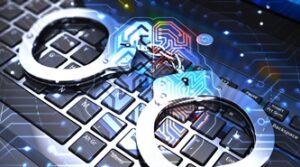 AI is an excellent tool for police to monitor and predict crimes. We can also use it for identifying vulnerable areas or individuals most at risk of becoming victims or perpetrators of crime. There are socio-economic factors that contribute to crime. AI has the potential to help police departments make better use of their resources by flagging areas that are likely to see an increase in crime or by identifying repeat offenders. AI delivers many advantages to the police department. These advantages include increased efficiency, increased accuracy, and ease of implementation. With efficiency, AI allows law enforcement to be more efficient because it reduces the time and effort necessary to sort through data. AI can help investigators and analysts process over 50% more data than they could use manual methods. As far as accuracy is concerned, AI provides law enforcement with a higher level of accuracy than what they could otherwise achieve manually. Finally, with ease of implementation, AI is easy to implement because it requires minimal training and a small initial investment in equipment.
AI is an excellent tool for police to monitor and predict crimes. We can also use it for identifying vulnerable areas or individuals most at risk of becoming victims or perpetrators of crime. There are socio-economic factors that contribute to crime. AI has the potential to help police departments make better use of their resources by flagging areas that are likely to see an increase in crime or by identifying repeat offenders. AI delivers many advantages to the police department. These advantages include increased efficiency, increased accuracy, and ease of implementation. With efficiency, AI allows law enforcement to be more efficient because it reduces the time and effort necessary to sort through data. AI can help investigators and analysts process over 50% more data than they could use manual methods. As far as accuracy is concerned, AI provides law enforcement with a higher level of accuracy than what they could otherwise achieve manually. Finally, with ease of implementation, AI is easy to implement because it requires minimal training and a small initial investment in equipment.
AI CAN HELP MONITOR CRIME SCENES
Police to solve complex cases of murder most often need intensive investigation. AI today is helping police officers detect vital clues from the crime scene. When cops visit a crime scene, they take photographs of the place where the crime occurred. Police use such pictures to find clues and evidence that can help open up a new link to the crime. AI-enabled systems are helping cops detect hints from such police photographs. For example, police can use a toy or a weapon seized from the crime scene and search for it in the police database to find the use of the same toy or weapon in any previous murders. It might not definitively link the culprit of the last murder to the current crime, but it will open up an investigation line worth checking out.
 Sometimes bombs may get placed by the criminals in strategic places. Bombs are among the most destructive weapons employed by criminals and terrorists. A single bomb can cause the death of hundreds of people. Robots equipped with AI can not only defuse bombs but potentially recognise nitroglycerin, aluminium powder, tetranitrate, passive infrared sensors, and other components used to create bombs at such crime scenes. With the ability to identify bomb components, AI-enabled robots can easily detect bombs without risking the lives of security personnel.
Sometimes bombs may get placed by the criminals in strategic places. Bombs are among the most destructive weapons employed by criminals and terrorists. A single bomb can cause the death of hundreds of people. Robots equipped with AI can not only defuse bombs but potentially recognise nitroglycerin, aluminium powder, tetranitrate, passive infrared sensors, and other components used to create bombs at such crime scenes. With the ability to identify bomb components, AI-enabled robots can easily detect bombs without risking the lives of security personnel.
AI CAN BE A GREAT TOOL FOR TRAINING POLICE OFFICERS
Training police officers is a tedious and expensive task. AI can help the police with training. It can analyse past interactions and decisions to help train new officers in the future. There are so many aspects of the job they need to learn. AI can help train officers by providing them with an understanding of the nuances of law enforcement. AI can offer a limitless number of scenarios to interact with, which will help them prepare for potential real-life scenarios. That would allow law enforcement agencies to focus on more pressing matters, like developing intelligence or combating terrorism and cyber threats. AI also can create a virtual simulation for officers who have never been in a law enforcement situation before. This way, they’ll be able to get some experience before they ever have to enter the field themselves.
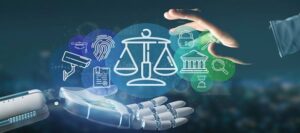
AI is also a valuable tool for training a trainer. If a trainer needs to provide ongoing training to other employees, AI can help make that process more efficient by providing an easy way to provide automated feedback and testing. When used correctly, AI can be a valuable tool for training. AI is becoming a trendy tool implemented in many training programs. There are many ways that AI police can use in a training program. One of the most popular uses for AI in a training program is to deliver the content to learners. Many training programs adopt AI to allow the learners to view the content from any location. And this is especially important for today’s workforce, which is constantly on the go and trying to balance family and work life. Another widespread use of AI in a training program is to deliver assessments. There are no more paper or pencil tests with AI, which can save time and money on printing and scoring tests. AI also provides instant results, making it easy for learners to know how they did on this test.
AI is also a valuable tool for training a trainer. If a trainer needs to provide ongoing training to other employees, AI can help make that process more efficient by providing an easy way to provide automated feedback and testing. When used correctly, AI can be a valuable tool for training. AI is becoming a top-rated tool implemented in many training programs. There are many ways that police can use AI in a training program. One of the most popular uses for AI in a training program is to deliver the content to learners. Many training programs adopt AI to allow the learners to view the content from any location, which is especially important for today’s workforce that is constantly on the go and trying to balance family and work life. Another widespread use of AI in a training program is to deliver assessments. There are no more paper or pencil tests with AI, which can save time and money on printing and scoring tests. AI also provides instant results, making it easy for learners to know how they did on their tests.
Police training institutes can use AI to evaluate whether a trainer effectively delivers the content. Training institutes can use AI as an aid in the classroom to provide feedback regarding the effectiveness of a trainer. AI can detect if the trainer is veering off-topic, if the trainer is giving good examples and explanations, and if they are using too many illustrations or not enough. Artificial intelligence can help provide structure and consistency to the instructor by allowing them to deliver consistent lectures across all classes. AI can also conduct research and collect data on how effective a trainer is at imparting knowledge, how well students are keeping information, and how long students take to complete specific tasks or assignments. AI is also a valuable tool for training a trainer. It can evaluate whether an instructor effectively imparts knowledge to their students through their lectures and instructional methods. It can also help train new instructors by assessing their effectiveness as instructors and helping them identify areas in which they may need improvement.
AI CAN ENHANCE FORENSICS
Law enforcement can also use AI for forensics. AI tools can help analyse audio, video, and images to help solve crimes.AI can improve forensics by scanning crime scenes for evidence that we may miss otherwise. Using artificial intelligence in forensic and criminal investigations is burgeoning. The potential applications of machine learning are staggering, including predicting when and where a crime will get committed and analysing behaviour patterns to determine the likelihood a suspect is guilty. AI is also being used to process a wide range of data, from audio recordings to video surveillance footage. That allows law enforcement agencies to streamline their investigative processes by removing some steps that were once necessary. In one recent example from China, police used AI in an investigation for the first time to classify evidence records by type, which made it possible for investigators to identify clues from recorded conversations that would have taken hours of work before AI was involved.
AI CAN ENABLE POLICE TO BUILD TRUST WITH THE PUBLIC
Building trust with the public is one of the crucial tasks of law enforcement. We can use AI to build trust with people by providing more transparency to police activities.
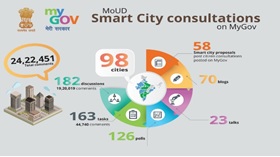 Lack of transparency makes building bridges with the public difficult. AI offers a solution. As law enforcement agencies and their officers use more AI technology, the data, processes, and actions taken become open for all to see. That’s important because people want assurances that their data is secure and that their privacy will receive protection no matter what happens. AI can also help build trust in other ways. For example, AI can predict when someone may need the police’s help before calling them or even knowing they need it.
Lack of transparency makes building bridges with the public difficult. AI offers a solution. As law enforcement agencies and their officers use more AI technology, the data, processes, and actions taken become open for all to see. That’s important because people want assurances that their data is secure and that their privacy will receive protection no matter what happens. AI can also help build trust in other ways. For example, AI can predict when someone may need the police’s help before calling them or even knowing they need it.
AI CAN HELP IN CREATING SAFER CITIES
AI will help police officers make more intelligent decisions on duty. The AI will predict events and even work with law enforcement agencies to create safer cities. One example of this already in the works is self-driving cars used by law enforcement to patrol certain areas more efficiently than humans could.
 A safe city concept is a crucial aim that takes a smart city to a greater level of development. Government can achieve the highest form of liveability for its people only by providing them with everything a safe city can. And AI is the only 21st-century tool that can create an effective safety shield for everyone. Crime, illegal activities or any such suspicious activities are nothing new. But as technology advances and people become more intelligent, exposure to threats increases. So, it becomes a necessity to use AI in safeguarding cities.
A safe city concept is a crucial aim that takes a smart city to a greater level of development. Government can achieve the highest form of liveability for its people only by providing them with everything a safe city can. And AI is the only 21st-century tool that can create an effective safety shield for everyone. Crime, illegal activities or any such suspicious activities are nothing new. But as technology advances and people become more intelligent, exposure to threats increases. So, it becomes a necessity to use AI in safeguarding cities.
AI can be a safety tool that enables cities to improve infrastructure and services by deploying intelligent technology and data in the right direction.
An integrated network of intelligent systems that effectively captures public safety information and responds to real-time events can make a city safe. These systems that use AI can predict and prevent suspicious or malicious activities from happening or going to happen in the city limits.
It is essential to focus on what information the police need to collect at the right place and time and who must have the authority to access the report. After having access, it is also crucial to decide how the information gets processed and how we ultimately use that information and create a safe environment for our citizens
Safety Measures In India With AI
The government of India is focusing on the development of 100 smart cities across the nation with the smart resurgence of the other 500 cities. Cabinet has already approved 98,000 crores ($980 billion) for developing safe and smart cities across the nation. The Smart Cities Mission of the Indian Government includes intelligent safety solutions for citizens focusing primarily on children, women, and older adults as the primary aim. The AI integrated safety measures include centralised video surveillance and management system that monitors and keeps checks on traffic movements, assets, crime and security of the public and their reputation.
On the other side, data accumulating sensors like LPR, social media intelligence, and gunshot detection with more applications on the list are shown on the GIS map to create better intelligence and precise awareness.
The best example to understand these applications better is the City of Surat in India. The crime rate in the city has dropped by 27% after implementing AI-based safety measures.
During incidents of violent crimes and prominent law and order disturbances, rapid intervention is crucial to prevent /serious injuries and escalation of violence. Instead of the AI systems, many police organisations still rely on manual phone information from the public.
If applied to existing CCTV camera feeds, AI-based real-time video analytics can enable law enforcement officers to monitor vast expanses of the city and spot violence faster.
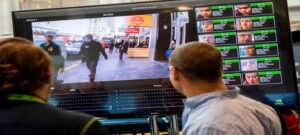
Older video analytics technology could cause false alarms–for example, flagging people hugging or dancing as fighting.
Advances in technology and behavioural analytics powered by artificial intelligence (AI) have dramatically boosted the precision of discovering such violence, enabling police to take proactive action to prevent its further spread.
The current behavioural analytics systems can identify fighting when hands move towards another person or repeated touching and disengagement as violence. The AI systems can also recognise differing fighting styles, including kicking, punching or wrestling, in indoor and outdoor settings. Besides, it can also detect the stabbing of a person. Researchers are now training AI systems to identify a person holding a weapon.
The action of a person stabbing another person can also get detected, even if the weapon isn’t visible. Further, we can now train advanced AI to recognise a person holding a gun in a threatening position.
This knowledge and context enable security personnel to comprehend what they are dealing with before arriving at the scene and help them respond most appropriately and safely.
AI IS A VALUABLE TOOL FOR AUTOMATED DECISION-MAKING
One of the most critical ways AI can help law enforcement agencies is by making better and more efficient decisions. For example, AI could analyse crime data and auto-generate a report with crime predictions for a specific area. The police could then use this information to better plan their patrols. AI could also make quicker decisions in dangerous situations. Imagine an officer on patrol stops a suspicious person in the middle of the night. With AI, they would no longer have to drive to the station, fill out paperwork, and wait for someone else to decide what action to take. They could submit video footage for analysis and await instructions from an AI-powered program to let them know whether it’s safe to take action on their own or if they need backup from other officers nearby.

AI CAN HELP IN BRINGING DOWN CRIME RATES
Implementing AI in law enforcement will decrease crime rates as more sophisticated artificial intelligence programs. AI can help predict future crimes by analysing data sources like social media, surveillance systems, and more, allowing the police to allocate resources effectively and make arrests before criminals commit crimes.
Artificial intelligence can help law enforcement identify suspects and even predict crime before it happens. “predictive policing” is a proactive policing strategy that uses data analysis and computer science to expect crimes and prevent them from happening. Identifying the most likely people who can commit a crime can affect crime rates, so many police departments adopt this approach. We can use facial-recognition software to identify people with warrants or other criminal records, lowering the number of crimes committed by repeat offenders.
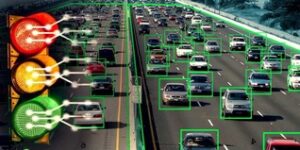 Criminals today use the internet to discuss or plan a crime. AI is monitoring such content on the internet. The Algorithms of AI detect such unusual words related to an offence conveyed over the internet. AI systems can then despatch information to the police department about such unusual activity or transmission between criminals, which can help identify the people about to commit a crime. Also, facial recognition can eventually help predict a person who will commit a crime. Behavioural changes can help AI systems detect and forecast a person’s future actions with facial recognition and tracking.
Criminals today use the internet to discuss or plan a crime. AI is monitoring such content on the internet. The Algorithms of AI detect such unusual words related to an offence conveyed over the internet. AI systems can then despatch information to the police department about such unusual activity or transmission between criminals, which can help identify the people about to commit a crime. Also, facial recognition can eventually help predict a person who will commit a crime. Behavioural changes can help AI systems detect and forecast a person’s future actions with facial recognition and tracking.
AI CAN HELP THE JUDICIARY IN MAKING DECISIONS REGARDING BAIL
AI systems can help Judges accurately determine whether an accused in an offence can grant bail or order a pretrial release or not. The established system is an imperfect system which is open to bigotry, as judges deliver varied judgments according to their point of view towards a crime. AI can help the judges decide the release of a criminal by appreciating the risk factors such as pending charges against the criminal, previous violent convictions, previous failures to appear for court hearings, and prior sentences to incarceration.
AI CAN REVOLUTIONIZE TRAFFIC MANAGEMENT
Every smart city worldwide uses or plans to use AI to mitigate traffic density and accidents. Sensors installed at parking lots, traffic signals, and intersections use artificial intelligence to accumulate valuable data for governments to plan their city initiatives efficiently. This raw data is unimaginably more extensive than humans can view, analyse and process, and it is here that the role of artificial intelligence comes in. AI can count many vehicles, pedestrians, or other movements while keeping track of their speeds. It can perform face recognition, read license plates and crunch all satellite data to any magnitude to establish patterns crucial for city advancements.
CONCLUSION
Police departments in several countries use AI to analyse vast amounts of criminal data and make sense of it. Police will also deploy AI to automate specific tasks and free-up officers to do other, more important, things. However, the technology is still in its infancy, and there are several challenges that law enforcement will need to overcome.

Artificial intelligence (AI) can be an excellent tool to police for monitoring and predicting crimes, for police training, for forensics and building trust with people. Artificial intelligence is here to stay. It continues to grow and thrive at an exponential rate. And with that growth comes a slew of opportunities, as well as challenges. It’s no longer a future concern, as it already has applications within law enforcement and the criminal justice system.
 Dr.K.Jayanth Murali is an IPS Officer belonging to 1991 batch. He is borne on Tamil Nadu cadre. He lives with his family in Chennai, India. He is currently serving the Government of Tamil Nadu as Director General of Police, Idol Wing CID.
Dr.K.Jayanth Murali is an IPS Officer belonging to 1991 batch. He is borne on Tamil Nadu cadre. He lives with his family in Chennai, India. He is currently serving the Government of Tamil Nadu as Director General of Police, Idol Wing CID.
